Women in Conservation: Hawk Mountain Trainee Alumnae
Posted on in In the Field by Rebekah Smith, Science-Education Outreach Coordinator
Although Women’s History Month 2021 ended as swiftly as our spring 2021 migration count began, at Hawk Mountain Sanctuary, we are celebrating women in conservation every day of the year. More specifically, since 1986, Hawk Mountain has been hosting young women in conservation from all over the world to train here, at the first sanctuary for birds of prey.
Gender equity from a global perspective is still very much a work in progress. Though we are seeing a rise in women occupying careers in ecology and biology in the United States, the story is not always the same elsewhere. Fostering equity in the field of conservation requires an increased awareness that gender is the sociocultural construction of masculinity and femininity that shapes people’s opportunities, experiences, social practices, and relations in day-to-day life. Gender stereotypes continue to shape the opportunities for women and men in STEM in ways that make being a woman in these fields more challenging.
Globally, women are often disproportionately represented in community decisions and policymaking regarding natural resource use and protection. In some areas, their roles in subsistence agriculture and gathering resources like wood, water, and forest products give them a unique and essential perspective on sustainability projects and natural resource protection. Additionally, the intersection of gender relationships, marital, and social statuses can directly impact women’s rights to land and their ability to participate in community initiatives. As a result, the solution to gender disparity in conservation has no one-size-fits-all approach. However, studies have shown that if conservation initiatives do not deliberately focus on women, women are often not included at all. Intentionally including women in conservation has positive outcomes. Studies in Nepal and India have proven that gender balance in conservation initiatives has resulted in more effective programs and healthier ecosystems.
Global raptor conservation and raptor monitoring efforts require the participation and support of entire communities, with a multidisciplinary approach that includes both science and education. At Hawk Mountain, 60% of our trainees have been women who have come to us from a total of 33 different countries. Giving women the tools to participate and become leaders in raptor conservation and education has always been an initiative that was built into the spirit of Hawk Mountain Sanctuary, beginning with our founder Rosalie Edge, who helped to win voting rights for women in New York before setting her sights on protecting birds of prey.
The five trainee alumnae who have chosen to share their stories below have all come from different backgrounds and different continents yet share quite a few things in common. All were chosen to become international trainees, studying raptor conservation at Hawk Mountain Sanctuary. All have experienced the hardships and rewards of being women in conservation. We celebrate these women and others who have come through the Hawk Mountain traineeship year-round.
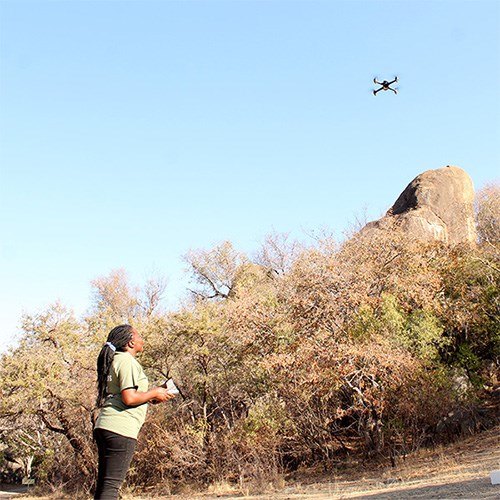
Kudzi Dhliwayo
HMS Conservation Science Trainee Alumna, Spring 2018My name is Kudzanai Dhliwayo, and I am currently studying vultures in Zimbabwe. My research assistants are all men. Working with men both from a cultural and professional background does come with its challenges. However, my passion for what I do is far greater than the challenges I meet.
Since I was a child, I have always loved animals. I went on to study ecology and joined BirdLife Zimbabwe, where I met a lovely lady, Helen Lewis, who taught me 95% of the bird species I know. She invited me on many trips and my love for birds grew even deeper. I was always eager to learn and do more in the field. I was like a sponge. Every time I was with her, I would be challenged and wanted to know birds as she did. I am thankful that she was and still is patient with me, as we still go birding together to this day.
I had the privilege of being part of an amazing family at Hawk Mountain Sanctuary where I was an international conservation science trainee. During my stay there I met several ladies who worked with birds and even handled them! I found this to be fascinating. Back home the majority of people who worked in the fields of ecology and ornithology were men. It was at Hawk Mountain Sanctuary that I was inspired to work with vultures.
When I returned home from Hawk Mountain, I registered for a Ph.D. in ecology studying vultures. I am proud to say all my supervisors are women, Professor C. T. Downs, Dr. L. J. Goodrich and Dr. L. J. Thompson. These ladies have been my pillars since day one of my studies. They are wonderful women who mentor, lift, strengthen, and motivate me. I have learned a lot in the few years that I have been with them and I would like to thank them. I surely am standing on the shoulders of giants.
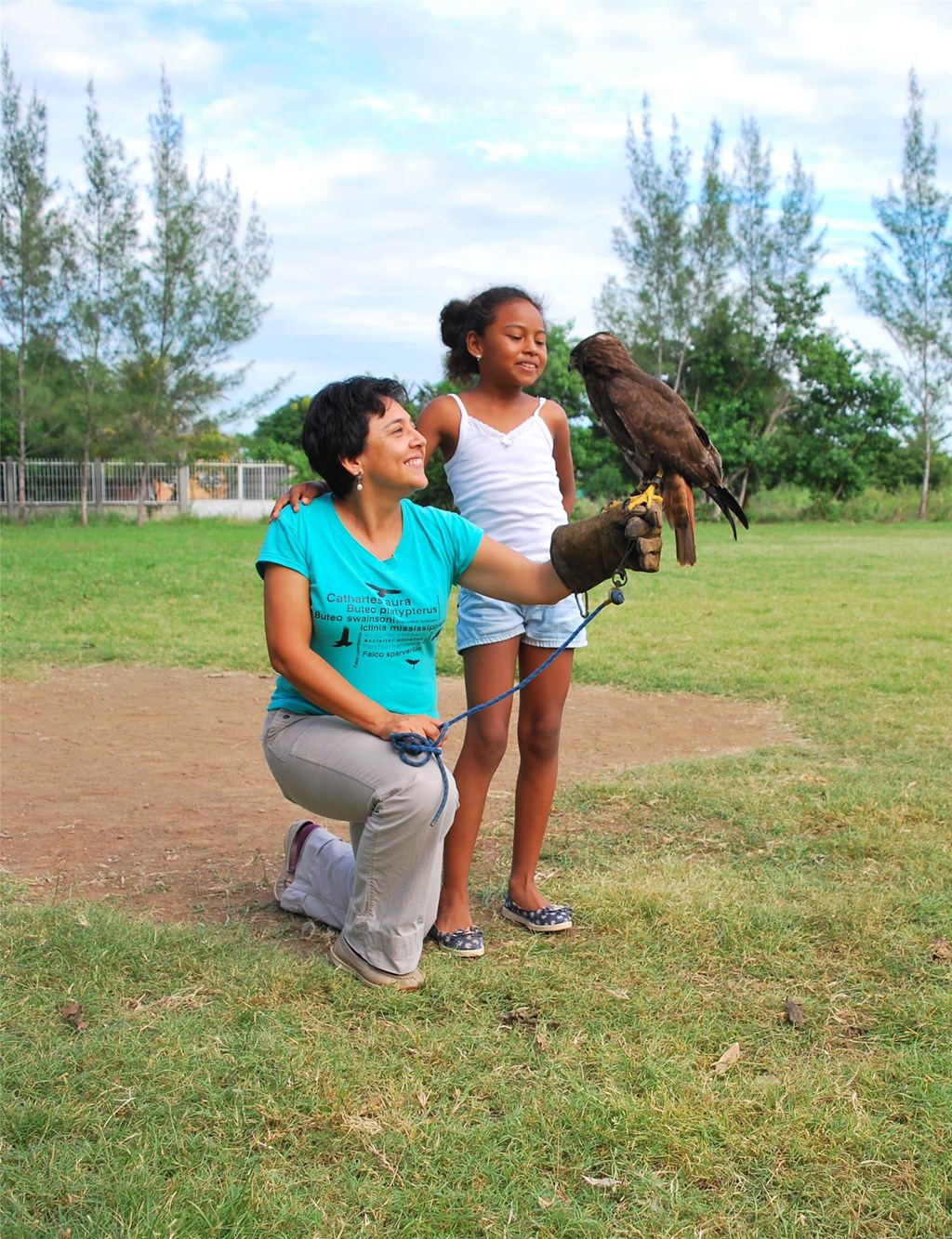
Yumei Cabrera Carrasco
HMS Conservation Education Trainee Alumna, Spring 1999
I began my career working in the field of environmental education in 1994 when I opened the Environmental Education Center in Acuexmatl, Puebla, run by the Coordination of Rural Development in Mexico City. In 1995, I joined the Pronatura Veracruz staff, leading the project called “Veracruz, Río de Rapaces” (“Veracruz, River of Raptors”).
In the spring of 1999, I was accepted to the Environmental Education Trainee Program at Hawk Mountain Sanctuary, where I developed and implemented activities for the conservation of raptors and their migration. Nowadays, I still apply the same education activities in Pronatura Veracruz, such as bird identification and the use of binoculars.
For 26 years, I have shared my love and care for birds with children in elementary schools in the state of Veracruz, by using a guide for environmental education, which is part of the project “Veracruz, River of Raptors”. My career of 26 years also includes teaching environmental education to children and teachers in the city and rural areas. I lead the Environmental Education Center and the workshops offered at the Bird Observatory in Chichicaxtle, Veracruz. I also worked as a volunteer in the Ecological Park “Macuiltepetl” in Xalapa, Mexico, giving talks about the raptor migration and conservation throughout multiple spring seasons.
I was part of the project called “Unidos por las Aves”, Bridging the Americas, which is sponsored by The Smithsonian Institute Migratory Bird Center. This project aims to link children from Latin America with children from the United States and make them aware of the importance of bird conservation. I coordinate the mailing and contact between children.
My concern for environmental education has led me to participate in different activities such as festivals, summer camps, and reforestation campaigns which aim to raise awareness of the importance of protecting our environment. I am also a part of green parrot conservation, working in the reserves of Tehuacan and Cuscatlán, in the state of Puebla. Through my work, I have had the opportunity to attend many seminars, courses, and international conferences in Mexico and other countries on the topic of birds and environmental education.
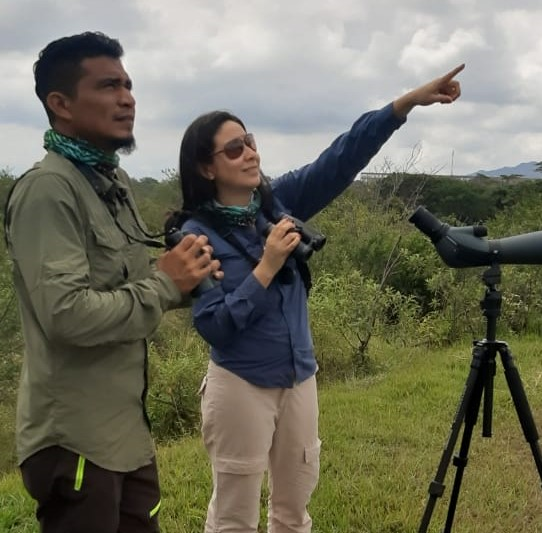
Esther Vallejo
HMS Conservation Science Trainee Alumna, Autumn 2019
Due to my work as a biologist, I have had the opportunity to travel to many places with different cultures in my country. As a woman, I have noticed how machismo continues to dominate, especially in the countryside. A woman with power, even today, is usually perceived as something annoying or rare for certain individuals in the community, despite all the female leaders that currently exist in Colombia.
Recently, I’ve found my job more challenging as the director of an NGO and coordinator of a conservation project, realizing that there is a long way to go to achieve gender equality. But each step I take in this new journey teaches me and makes me grow as a woman and I feel that this experience can also contribute to change the perspective of the people around me, about women working in wildlife. I hope that with the participation of more women in this type of career, judging the ability of people according to their gender will be a thing of the past.
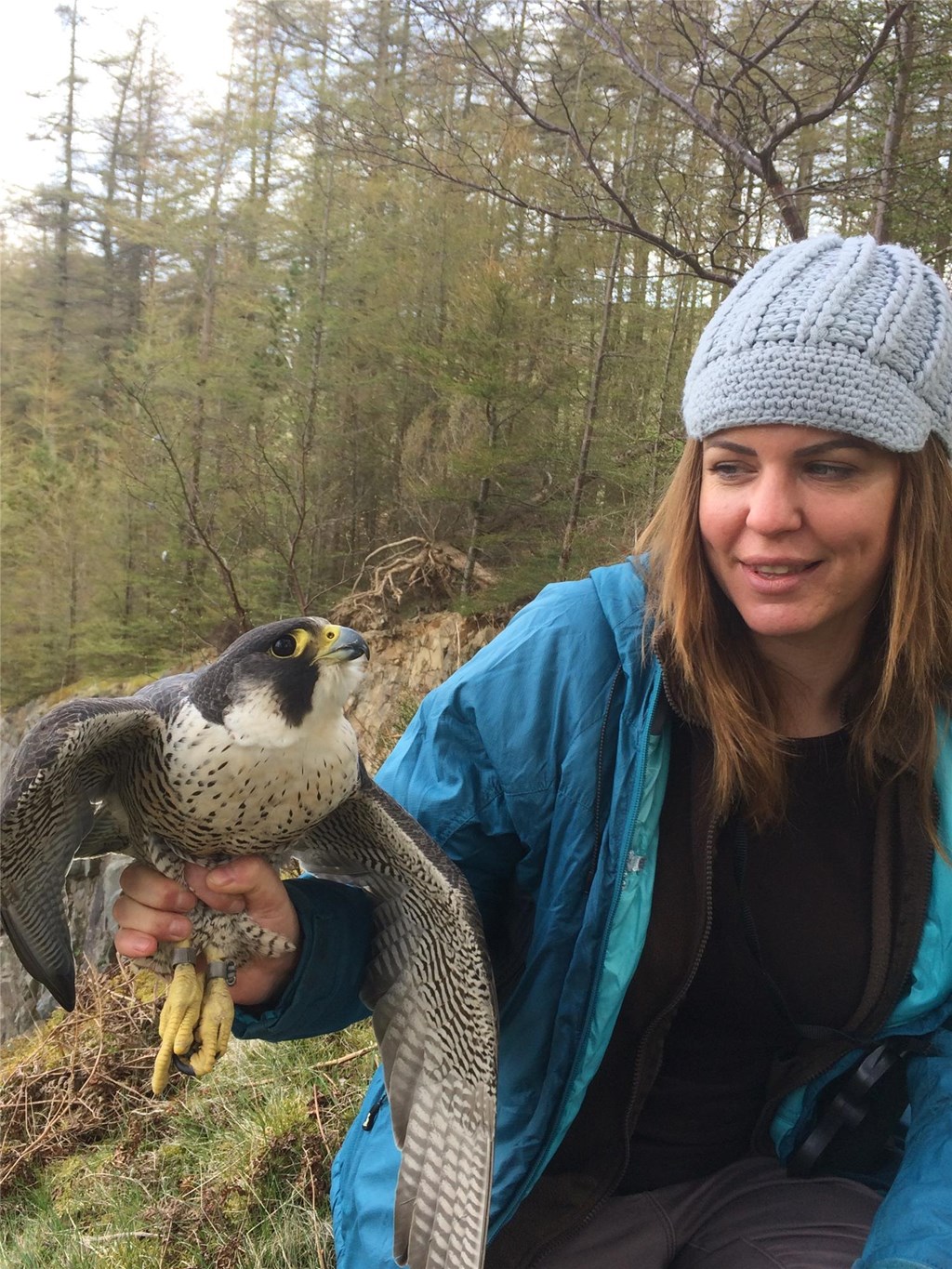
Zoe Smith
HMS Conservation Science Trainee Alumna, Spring 2009
Growing up surrounded by woodlands gave me an innate love of wildlife and nature that contributed to my choosing a career linked to nature. Ian Newton is an inspiration to me, especially in the books he has written on raptor ecology. While at college I studied animal husbandry and my favorite module was ecology. I took a gap year to decide which university and course to take and get some volunteering experience working with sea turtles. I went to Bournemouth University and got a BSc in environment and conservation biology. Part of the course required us to do work experience and in the first year, I went to the United States to participate in wild black bear conservation, and in the second year, I went to Greece to work on a wild brown bear research project. It was there that I heard about a paid volunteering opportunity called the European Voluntary Service (EVS, now knows as Erasmus plus).
After graduating from university, I applied for an EVS-funded placement in Dadia National Park in Greece carrying out fieldwork for World Wildlife Fund Greece. I worked on the project for a year, working and living as part of a multicultural team. Whilst working on this project I developed a passion for birds of prey research. Through visitors and colleagues, I heard of a place in the United States called Hawk Mountain, a raptor conservation organization that offers internships.
I was lucky enough to get a spring traineeship and learned about raptor migration and identification. I also learned the importance of international conservation efforts and collaboration. Wanting to put my skills into action in the autumn of that year, I volunteered at a new project at the time, the Batumi raptor count in the Republic of Georgia. Moving back to the UK, I got my first contract working for the Royal Society for the Protection of Birds (RSPB) on the national hen harrier breeding survey. I applied for a Natural Environment Research Council scholarship and got a funded placement at The University of Reading to study an MSc in wildlife management and conservation. Half of the course was research and I carried out my research project in South Scotland looking at common buzzard prey selection on a grouse moor. Whilst working on that project I offered some work for an environmental consultancy. After graduating they offered me a permanent position. I worked there for a few years but missed working abroad and missed working on raptor migration research. From a previous contact I met when volunteering in Georgia I heard about a job in Armenia working on raptor migration. I got the job and moved to Armenia. After the contract finished, I was offered an extension and asked to work as Ecological Clerk of Works. Following this I decided to move to Turkey and then went to work as a raptor counter for Ornis Italica at the Strait of Messina in Italy and in the autumn, I worked for Birdlife partner ProNatura in Mexico in Veracruz.
The next year I got a job working for the RSPB on the next hen harrier breeding survey as Senior Research Assistant in Scotland.
I decided to fully move back to the UK and got a Heritage Lottery-funded post as Peregrine Project Officer for the Hawk and Owl Trust on a three-year project. All of these experiences have led me to my current role as Community Engagement Officer for the British Trust for Ornithology BTO.
My top tips for women pursuing a career in conservation would be; networking is very important, every person you meet is a potential opportunity so try to be open and friendly, take time to get to know others, and take time to find your passion.
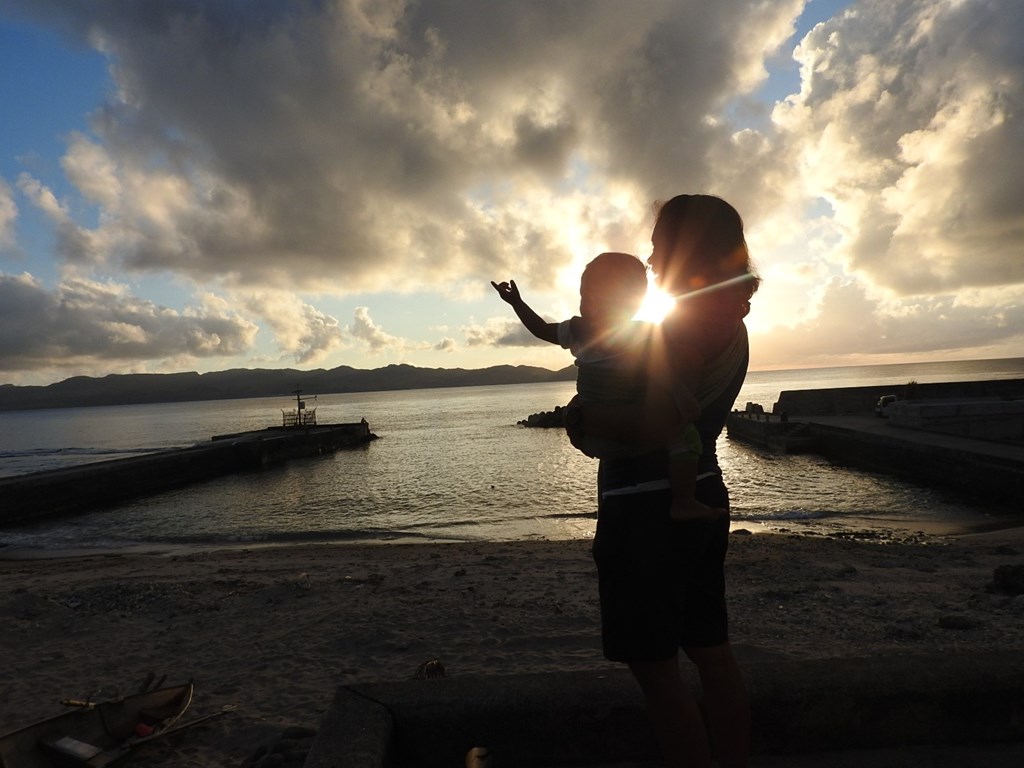
Camille Concepcion
HMS Conservation Science Trainee Alumna, 2011“A cute, little girl” – the caption read. While I would like to believe I am cute, I was not a little girl. At that time, I was presenting my master's research at a conference. So cute + little + girl was not the caption I was hoping for. Many unflattering captions came before and have followed this.
I was once accused of being promiscuous because people were more willing to help me than my male colleagues. I apparently stole a project that I designed and carried out because some could not believe a female could get it off the ground on her own. More recently, I was a horrible mother for bringing my infant son with me in the field to observe hawks migrate over the ocean. I took him with me for the next two years until the pandemic hit.
On the other hand, labeled as “a cute, little girl” does have its advantages. You are seen as a non-threatening figure, so people are more willing to engage with you. You can also help foster peace, often perceived as more trustworthy than your male counterparts. And we all know that wives know more than husbands, mothers see more than their sons, sisters feel more than their brothers, and daughters love fiercely.
Ironically, it was a counsel of older white men who helped make sure that this Asian woman did not have to abandon her passion. And that is really all you need – partners for collaboration, mentors to train you, and parents who raise you to know no limits so you can be a wildlife researcher – no gender attached.
***
If you are a former trainee and would like to share an update with us, please contact Wendy at [email protected] or Rebekah at [email protected]. We would love to hear from you!
If you would like to support our trainee program, please contact Laurie at [email protected] or Mary at [email protected].
Read more about gender equity in conservation here:
- https://www.researchgate.net/publication/339539500_Three_lessons_for_gender_equity_in_biodiversity_conservation
- https://www.nature.org/en-us/about-us/who-we-are/our-science/we-need-women-in-conservation/
- https://theconversation.com/women-are-rising-in-the-conservation-movement-but-still-face-metoo-challenges-117071